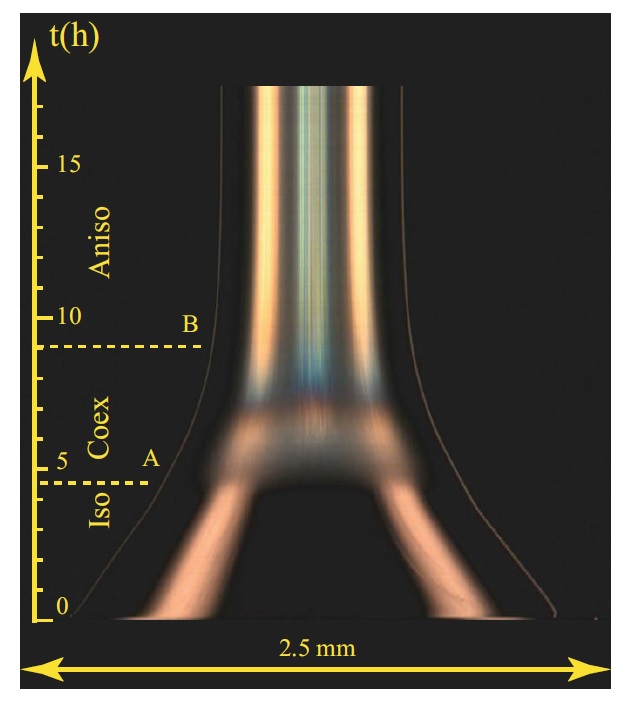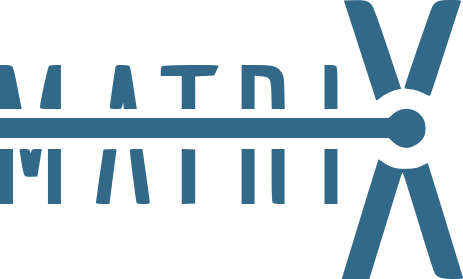Members
Permanent members
- Pierre-Antoine Albouy
- Patrick Davidson
- Pawel Pieranski
- Mehdi Zeghal
Postdocs & PhD
- Karin El Rifaii
(PhD) - Camille Mahyaoui
(PhD)
Former team members
- Danilo Rosa Nunes
(PhD) - Xiang Shi
(PhD)
Research thematics
Crystallization under stress in elastomers
Some elastomers, especially those based on natural rubber, have the property to partially crystallize spontaneously above a certain stress, which gives them remarkable mechanical properties. Although this phenomenon has been known for a long time, many fundamental aspects are still poorly understood: crystallization kinetics, difference between static and dynamic crystallization, crystallization at the bottom of a tear, interaction with reinforcing fillers, etc. X-ray diffraction is a tool that is particularly well adapted to the study of these effects, and specific equipment that allows simultaneous X-ray and mechanical measurements at different temperatures has been developed. These studies concern not only the behavior of the materials in cycling, but also the problems of cracks (new micro-diffraction set-up allowing to finely explore a crack bottom) and of crystallization kinetics (oscillating traction set-up); a specific NMR set-up has also just been completed in order to access to the stress state of the amorphous fraction during a traction.
Captive disclination loops & chirogyral effect
Some solutions of hydroxypropyl cellulose (HPC) polymer in water present a cholesteric structure. Their viscoelastic properties are suitable for pulling chiral filaments [1] as illustrated in Figure 1.

The dehydration of the HPC filaments gives polymeric fibers similar to textile fibers or spider threads. When these fibers are immersed in a nematic phase (e.g. 5CB) subjected to electrohydrodynamic instabilities, captive disclinations are generated, i.e. ring-shaped rings are threaded onto the fibers. The elastic repulsion with the polymeric surface prevents the collapse of the rings. On chiral fibers (due to molecular chirality or mechanical torsion) the rings are tilted with respect to the plane orthogonal to the fibers. The angle of inclination depends on the chirality of the fiber. This is the chiro-gyral effect as illustrated in the video [2]. Interestingly, a magnetic field inclined to the fibers also allows captive disclinations in motion and can lead to the coalescence of the disclination pairs [3].
Physics of the Dowser structure
Experiments on captive disclinations led us to the dowser texture and its remarkable properties. The name comes from its resemblance to the wooden dowser tool. This texture is not unstable, as was believed for decades, but only metastable and under certain conditions can be maintained indefinitely. Since its complex order parameter is degenerate with respect to the phase, the dowser texture is sensitive to vector fields and, consequently, it is endowed with novel properties called cuneitropism, rheotropism and electrotropism. The dowser texture also appears as a natural universe for nematic monopoles and antimonopoles. These findings are discussed in a recently published book.
References
[1] M.H. Godinho, P. Pieranski and P. Sotta, EPJE, 2016, 39, 89
[2] S. Copar, D. Sec, L.A. Aguire, P.L. Almeida, M. Dazza, M. Ravnik, M.H. Godinho, P. Pieranski and S. Zumer, Phys. Rev. E, 2016, 93, 032703
[3] M. Dazza, R. Cabeça, S. Copar, M.H. Godinho and P. Pieranski, EPJ E, 2017, 40, 28
